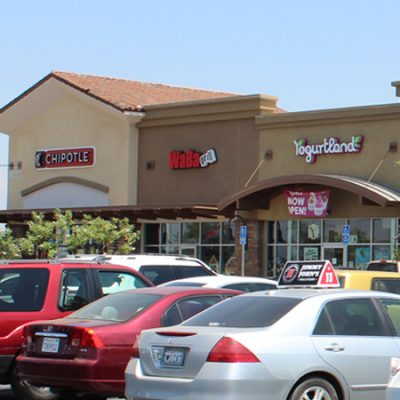There is an axiom that “the whole is greater than the sum of its parts,” but that may not be the case when selling a shopping center. As demand and pricing for non-core, grocery-anchored shopping centers continues to wane and cap rates inch upwards, implementing a break-up sales plan can help provide an owner with better overall net proceeds. By selling a shopping center in pieces, a seller might realize an improved value of anywhere from 75 to 100 basis points with an effective cap rate compared to selling the entire center as a whole. Furthermore, the pricing of separate, smaller offerings, appeals to a much larger buyer pool — a buyer pool that has continued to have the most depth and velocity in this current market.
For example, in California, sales for multi-tenant pad buildings in anchored shopping centers increased 14 percent between 2017 and 2018, while cap rates compressed 8 percent to an average of 5.55 percent. Although single-tenant sales within anchored centers in California fell 9 percent, cap rates dropped from an average of 4.91 percent in 2017 to 4.83 percent in 2018. We expect the demand for both single-tenant and multi-tenant pad buildings in major markets throughout the U.S. will continue to be strong, especially from the private investment community.
In the past, there was a sizeable investor group for power centers and second-tier grocery- and soft goods-anchored centers, but this buyer pool has substantially diminished for these types of non-core shopping centers given the ever-changing consolidation and right-sizing of big-box retail tenants. Further, institutional buyers continue to be selective in pursuing brand-new, ground-up developments. New developments, with premium rents may not provide an institutional buyer with enough “lift” or projected future return compared to purchasing a seasoned shopping center where the anchor and shop rents could be below market. So, owners with large shopping centers (established or new construction) located in secondary and tertiary markets may find that a break-up play is a potential solution as an exit strategy to maximize value.
A break-up strategy may not work for everyone though. There are some shopping center owners that may not have the time to parcelize their property or the ability to sell their shopping center in pieces. Depending on how many transactions are needed to sell out a property, it might take up to 12 months to sell all the parcels individually. However, selling an entire center could also take at least that long, depending on the quality of the tenants, location and pricing. For those owners that don’t want to implement a break-up strategy or can’t, there are investors and developers that are purchasing whole shopping centers, where the new buyer can parcelize the property (or parcelization is already in place) and realize the upside to selling off some or all of the pieces.
For example, in 2018, Hanley Investment Group completed separate sales of six pad buildings within Perris Marketplace, a Walmart-anchored shopping center in Perris, California, which resulted in approximately 100 basis points in effective total value (in regard to cap rate) as compared to the price if the center had been sold as one property. We were able to maximize value for the owner through individual sales to private, non-institutional investors in a price range of $2 million to $10 million, which in today’s market, appeals to arguably the largest buyer pool in the retail investment industry. Four of the six buyers satisfied 1031 exchange requirements with most purchasing each asset because of the reliable stable income stream created by internet-resistant, service-based, national and regional credit tenants on new long-term leases. Some of the single-tenant and multi-tenant pad building tenants included in the sale were Starbucks, Panda Express, Wendy’s, Chipotle, Pieology, Pacific Dental, Popeye’s, Yogurtland, Jimmy John’s, T-Mobile, and Waba Grill.
In addition to executing a break-up sale strategy, a pre-sale marketing plan can also reap rewards for the seller. With interest rates fluctuating and the overall retail investment market continuing to transition in regard to pricing, implementing a pre-sale marketing process on buildings prior to the completion of construction can be an effective tool to capture today’s values and stay ahead of any potential future macro-economic market changes. It can also provide a developer with the potential benefit to sell off certain initial components to pay off a construction loan ahead of the entire project being completed, and the option to prospectively exercise more patience in leasing up any remaining vacancy at the balance of the shopping center. Perris Marketplace was not only a prime example of executing a break-up sale, but a pre-sale marketing plan that helped the seller achieve maximum value for the development. For multiple transactions, we procured a buyer for each asset prior to the buildings being completed, and structure closings while some of the tenants were still in the process of finishing their build-outs.
Hanley Investment Group is currently in the process of executing multiple break-up sales and pre-sale marketing plans at shopping centers located in California as well as across the country. We expect that both sales strategies will continue to be popular and effective sales strategies in 2019 and beyond.
— Bill Asher serves as executive vice president and Jeff Lefko is vice president of Hanley Investment Group, a nationally recognized real estate brokerage and advisory firm specializing in retail property sales serving clients from across the country from its offices in Corona del Mar, California. To learn more, see www.hanleyinvestment.com.

